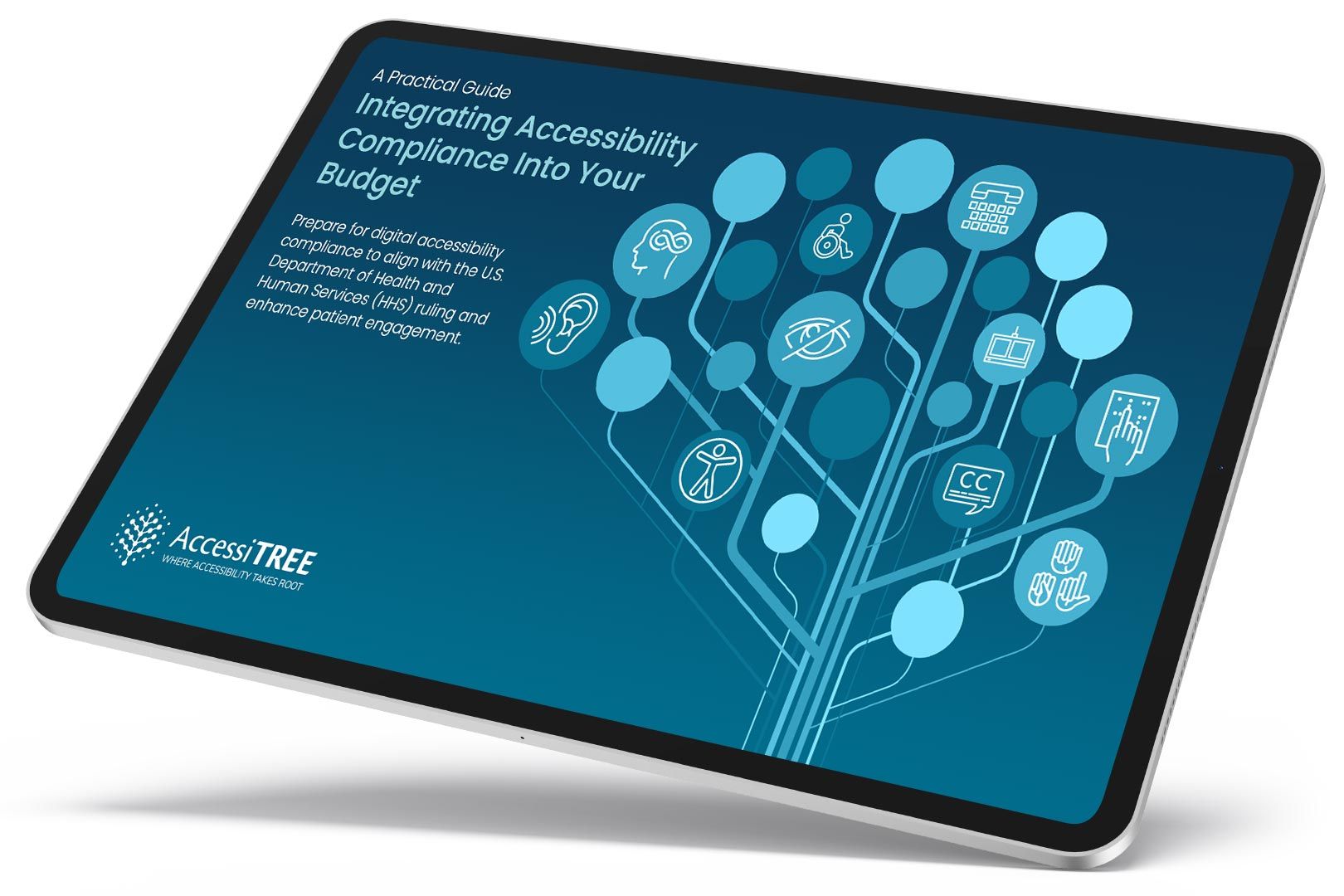
Accessibility Audit Costs: Understanding the Process and Value
An accessibility audit is a comprehensive evaluation of a website or digital asset to ensure it is usable by individuals with disabilities. For healthcare providers, accessibility audit costs are an important consideration, as these evaluations are critical to ensuring patients, caregivers, and staff can interact with your digital resources effectively. These audits assess compliance with standards such as the Web Content Accessibility Guidelines (WCAG) and regulations like the Americans with Disabilities Act (ADA). Recently, the HHS ruling has reinforced the importance of digital accessibility in healthcare, mandating that healthcare organizations meet specific accessibility standards to ensure equitable access for all individuals. By addressing accessibility, healthcare organizations can improve patient access to care, streamline communication, and foster trust while avoiding potential legal risks. Accessibility in healthcare is not just a regulatory requirement; it is a vital step toward inclusivity and equitable care for all individuals.
Why Accessibility Audits Are Essential
Conducting an accessibility audit is crucial for several reasons:
- Legal Compliance: Ensures adherence to laws and standards, reducing the risk of legal challenges.
- Improved Patient Experience: Enhances usability for all users, including patients with disabilities, ensuring they can access vital healthcare information and services.
- Broader Reach and Inclusivity: Makes your digital resources accessible to a wider audience, including individuals using assistive technologies like screen readers.
- Positive Reputation: Demonstrates a commitment to patient-centered care and inclusivity, strengthening your organization’s brand and trustworthiness.
The Accessibility Audit Process
A thorough accessibility audit typically involves the following steps:
- Scope Definition: Identify key pages, patient portals, forms, and workflows that are critical to patient care and communication.
- Automated Testing: Utilize tools to detect common accessibility issues across the site, such as missing alt text or improper heading structures.
- Manual Evaluation: Conduct detailed assessments, including:
- Screen Reader Testing: Ensure content, appointment scheduling systems, and patient portals are navigable and understandable using screen readers.
- Keyboard Navigation: Verify that all interactive elements, such as forms and call-to-action buttons, are accessible via keyboard.
- Color Contrast Analysis: Check that text and background color combinations meet contrast requirements to aid readability for all users.
- Reporting: Compile findings into a comprehensive report detailing issues, their impact on patient access, and recommended remediation steps.
- Remediation Planning: Develop a strategy to address identified issues, prioritizing those that directly impact patient access and regulatory compliance.
- Re-Testing: After remediation, re-evaluate to confirm that issues have been resolved, ensuring a seamless user experience for patients.
Quantifying Remediation Costs
Understanding the cost of remediation is vital for budgeting and planning. Factors influencing these costs include:
- Number of Pages: Larger websites with patient portals and numerous resources require more extensive evaluations.
- Complexity of Content: Interactive elements like appointment schedulers, telehealth platforms, and patient forms can increase assessment time.
- Current Accessibility Status: The extent of existing issues will affect the scope of remediation efforts.
For healthcare providers, accessibility remediation not only ensures compliance but also aligns with the mission of providing equitable care. Costs for manual accessibility audits can range from $1,000 to $25,000 or more, depending on the scope and complexity of the site. These audits are essential in helping organizations quantify the resources needed to achieve full compliance and deliver inclusive care.
AccessiTREE’s Inclusive Accessibility Services
At AccessiTREE, we integrate comprehensive accessibility audits into our monthly plans across all four tiers of both our full-service and self-service solutions.
Full-Service Website Remediation
Our team of experts handles the entire remediation process, ensuring your digital assets are fully accessible. This includes performing the initial audit, outlining the remediation plan, and implementing changes to meet compliance standards. We focus on elements critical to healthcare providers, such as websites, patient portals, telehealth platforms, and appointment systems.
Self-Service Website Remediation
We empower your in-house team with the tools, training, and support needed to achieve accessibility compliance. With AccessiTREE’s self-service plans, you maintain control while benefiting from our expert guidance. This option is ideal for healthcare organizations that have internal IT or digital teams but need direction and resources to meet compliance requirements.
Accessibility Audits and Pricing Made Simple
By choosing AccessiTREE, you benefit from a structured approach to accessibility that not only ensures compliance but also enhances the overall patient experience.
Our comprehensive audits are included in every tier of our plans, giving you the flexibility to select a solution that aligns with your organization’s needs and budget. To learn more, explore our Full-Service Website Remediation and Self-Service Website Remediation options today.

